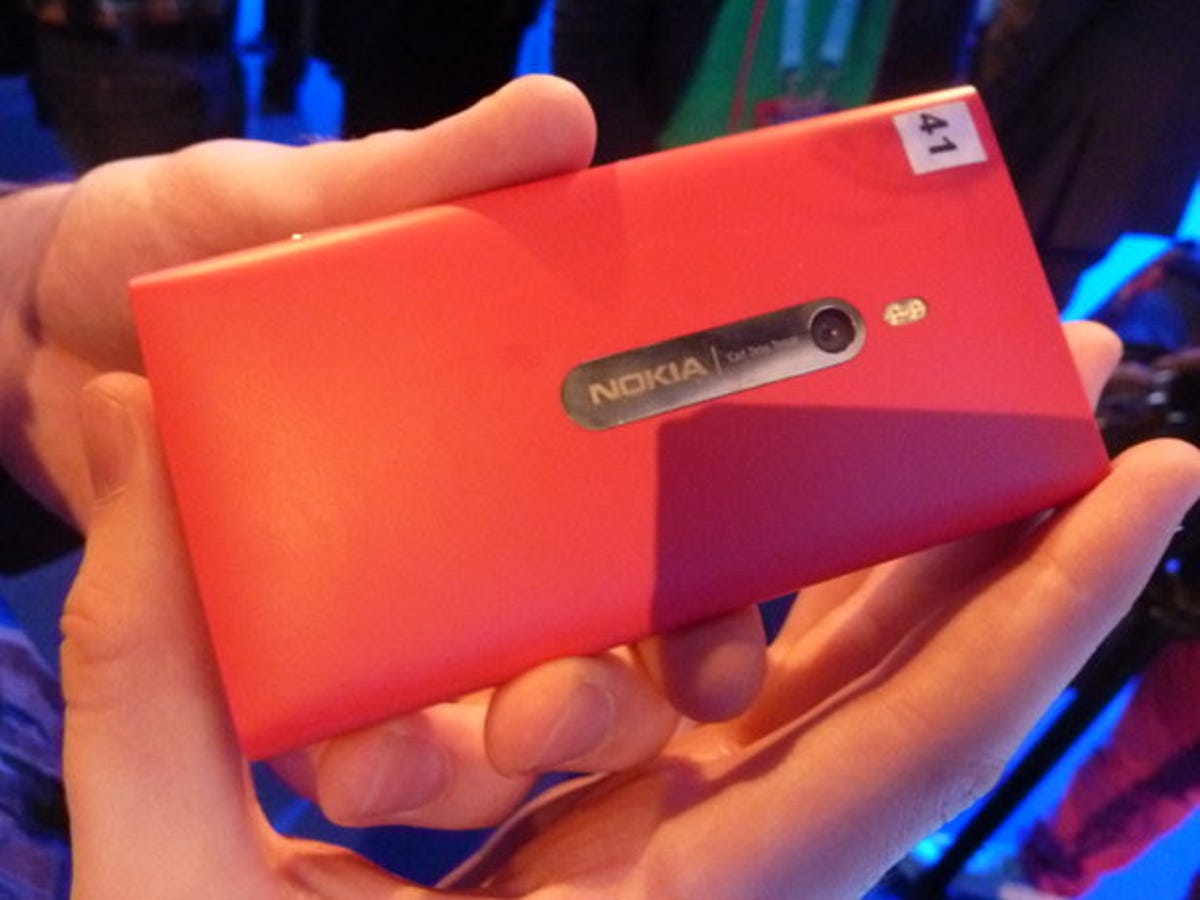
One of the features of the new Nokia Lumia 800 that Nokia is most proud of is the camera — it has an 8-megapixel sensor, high-quality Carl Zeiss optics and an f/2.2 aperture. To see how it really stacks up as a snapper, we pitted it against the Samsung Galaxy S2 and the iPhone 4S, both superb phones with excellent cameras.
Nokia has a good history of making excellent cameras on its devices — the N8 was so good it was rivalling some compact digital cameras. We were desperate to see if this grand tradition survived the company’s transition to using Windows Phone.
We didn’t have a whole lot of time to spend with the phone, so it’s not an exhaustive test — we’ll save that for the full review — but it certainly gave a good first impression.
In testing, all quality settings were set to maximum and creative effects (such as white balance) were set to automatic.
Thanks to Phones4U, which has a working Nokia Lumia 800 at its Oxford Circus store.
General objects
We chucked a few objects onto a table that would give a good indication of brightness, colour and sharpness in each photo.
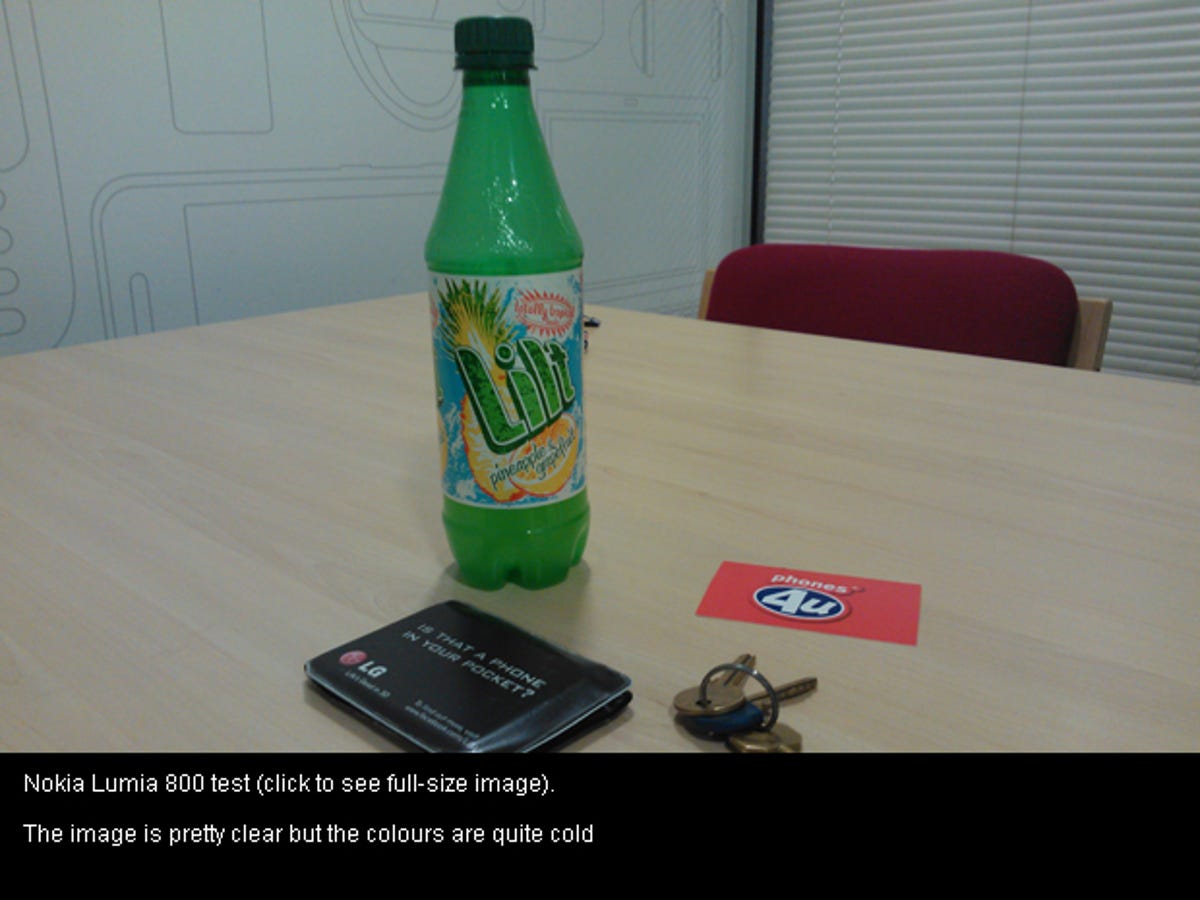

The Nokia Lumia 800 did an average job of capturing the scene. The colours were noticeably colder than real life, showing that the automatic white balance isn’t doing a great job of things. It looked pretty good on the phone’s screen, but once we saw the full picture, we noticed it wasn’t particularly sharp.


The photo from the Galaxy S2 was very sharp, with great colour balance. It was a little darker than the room was, but that’s a very minor complaint.
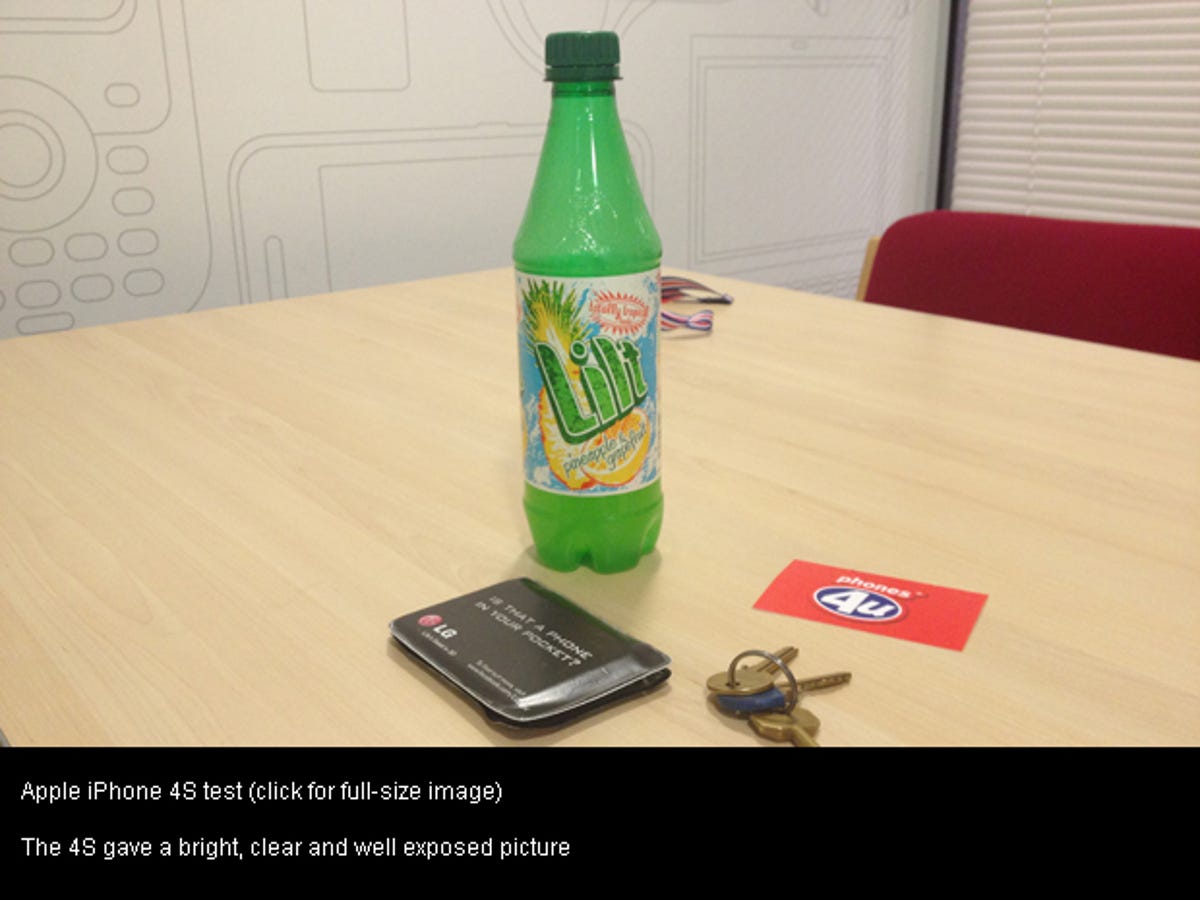

The iPhone 4S provided a photo that was also very sharp, and bright too. The colours were definitely not as rich as we saw on the Galaxy S2, however.
General objects, with flash
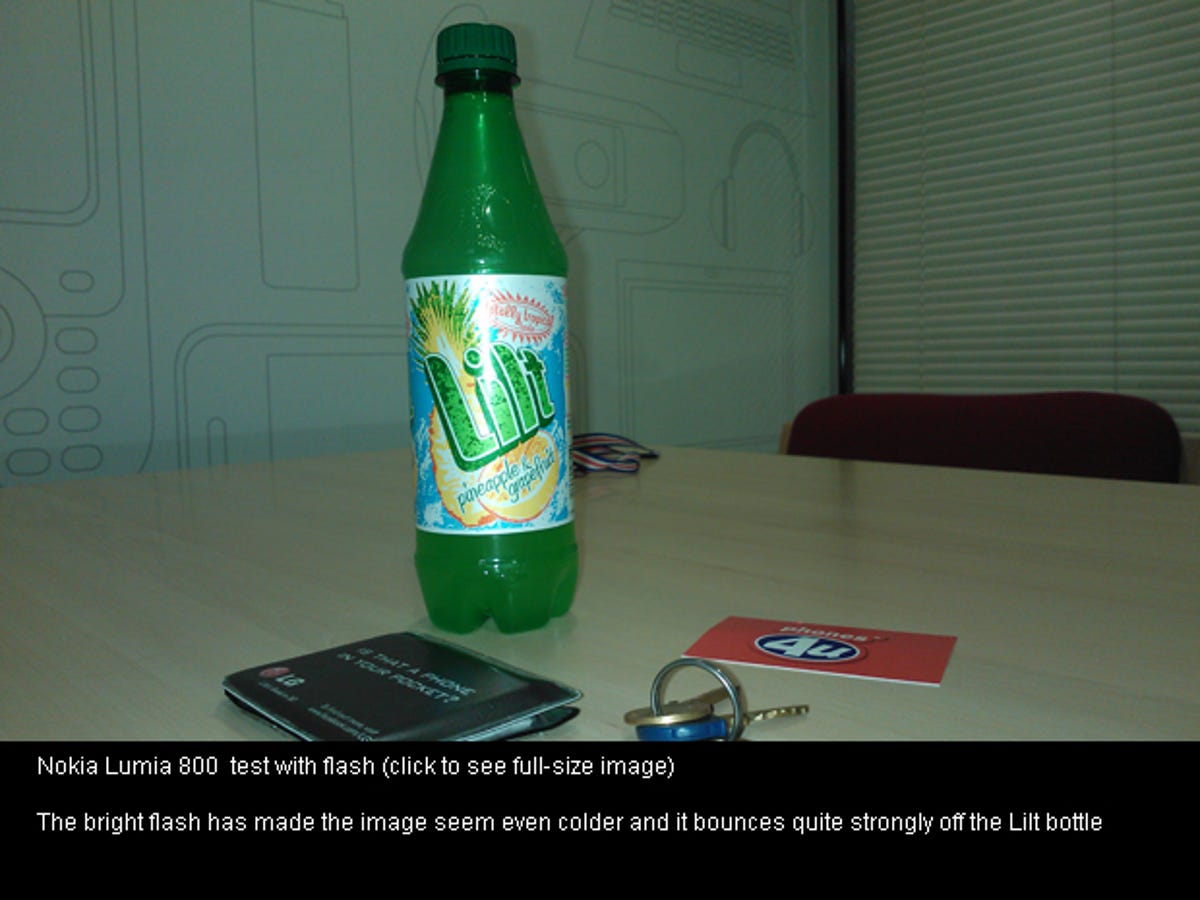

With the flash on, the Nokia’s photos were even colder than before. It wasn’t an overpowering flash though, so much of the detail was retained.
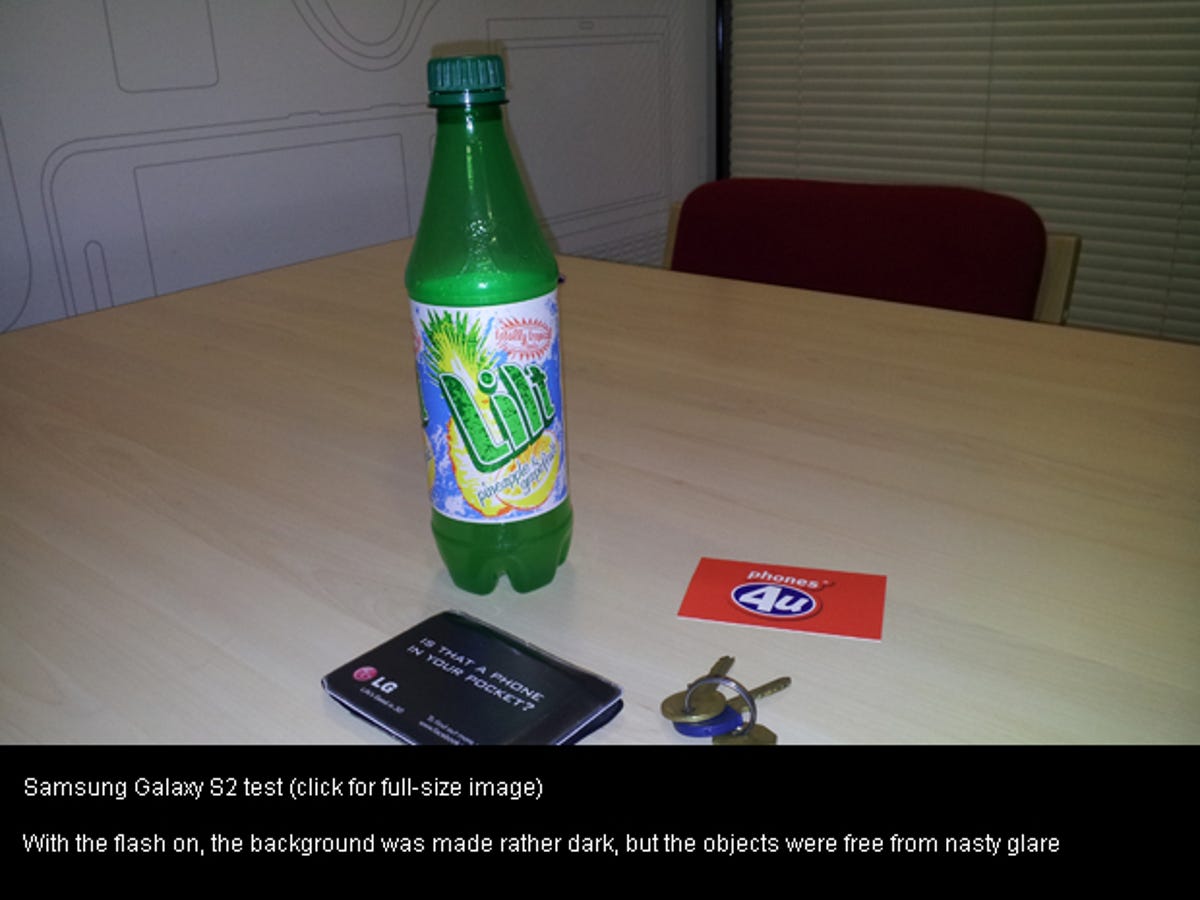

The Galaxy S2 did a good job with the flash on. The picture kept a pleasing colour balance and there wasn’t too much glare from the flash itself.
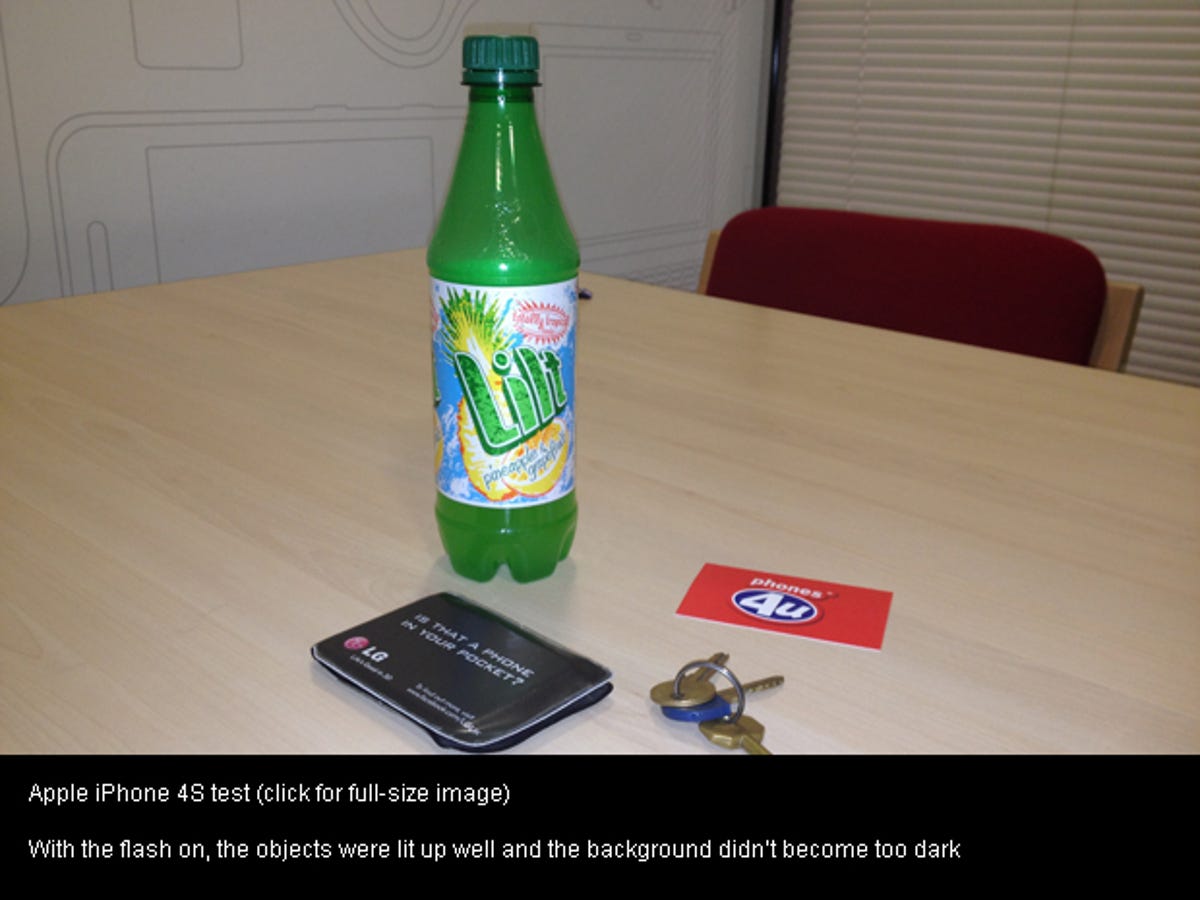

The 4S did the best job in this round — the flash illuminated the objects without much alteration to the general colour tone.
Close-up photos
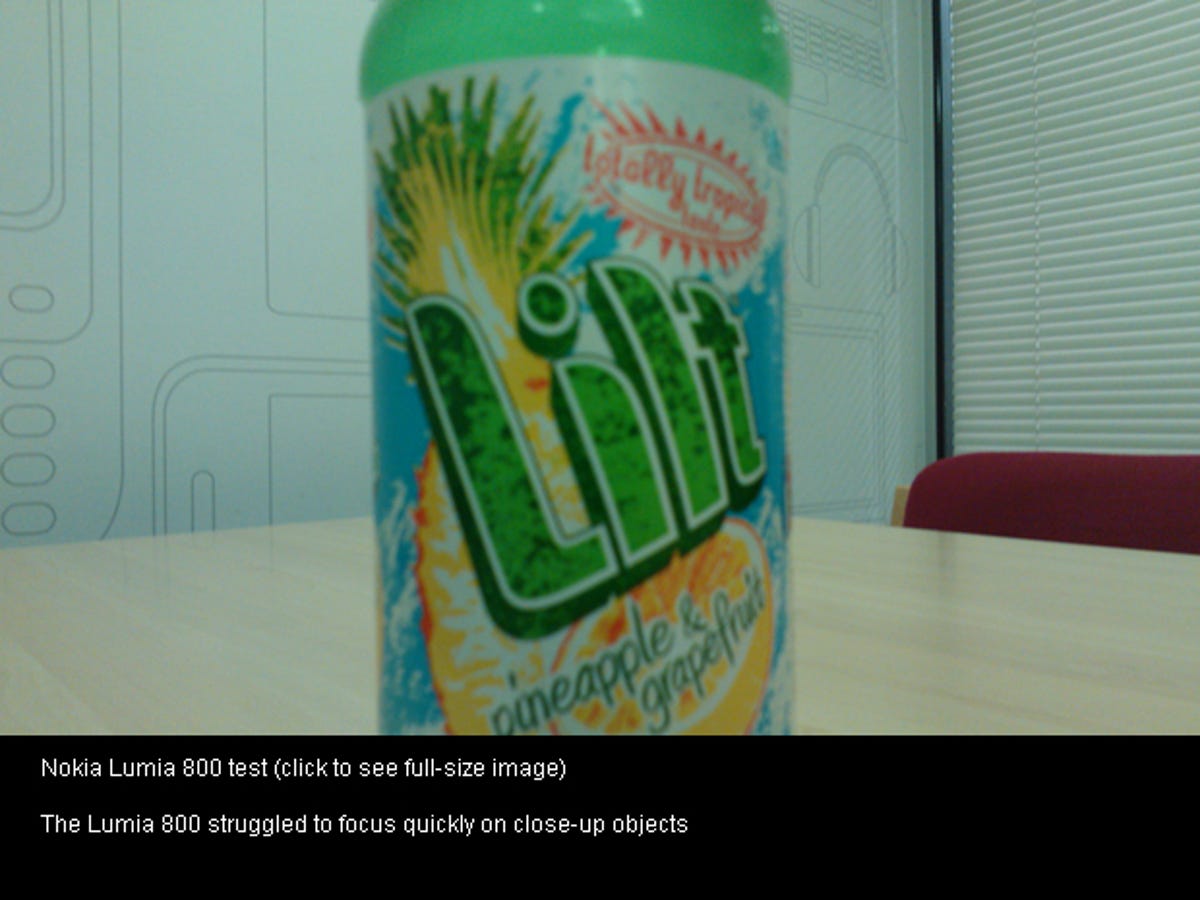

The Lumia 800 struggled to focus properly up close. If we had taken the time to compose the shot and adjust our distance for the camera, we could maybe have achieved a better shot, but it was important to handle each phone in exactly the same way. It’s a disappointing result for the new boy.
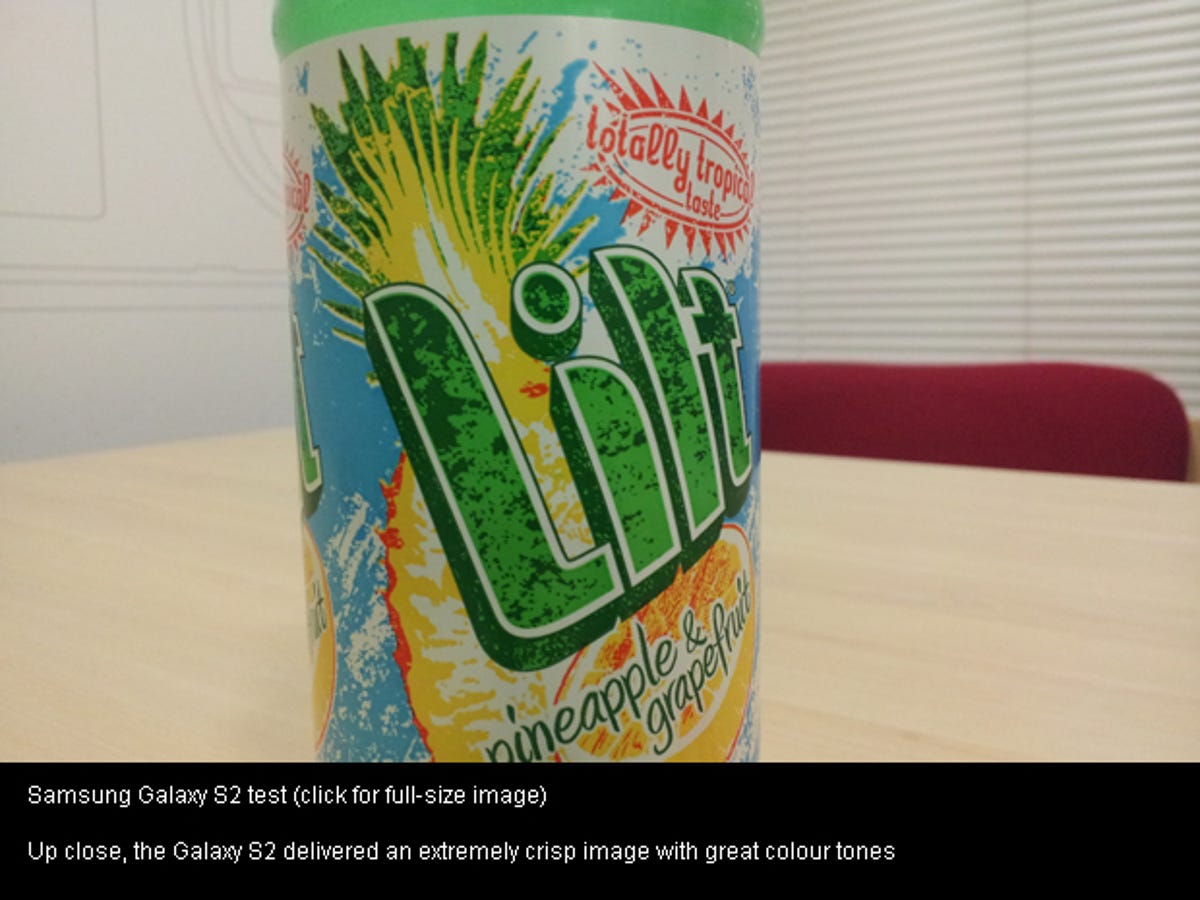

The Galaxy S2 was able to gain a sharp focus on our close-up delivering a crisp photo with great colour and light balance.
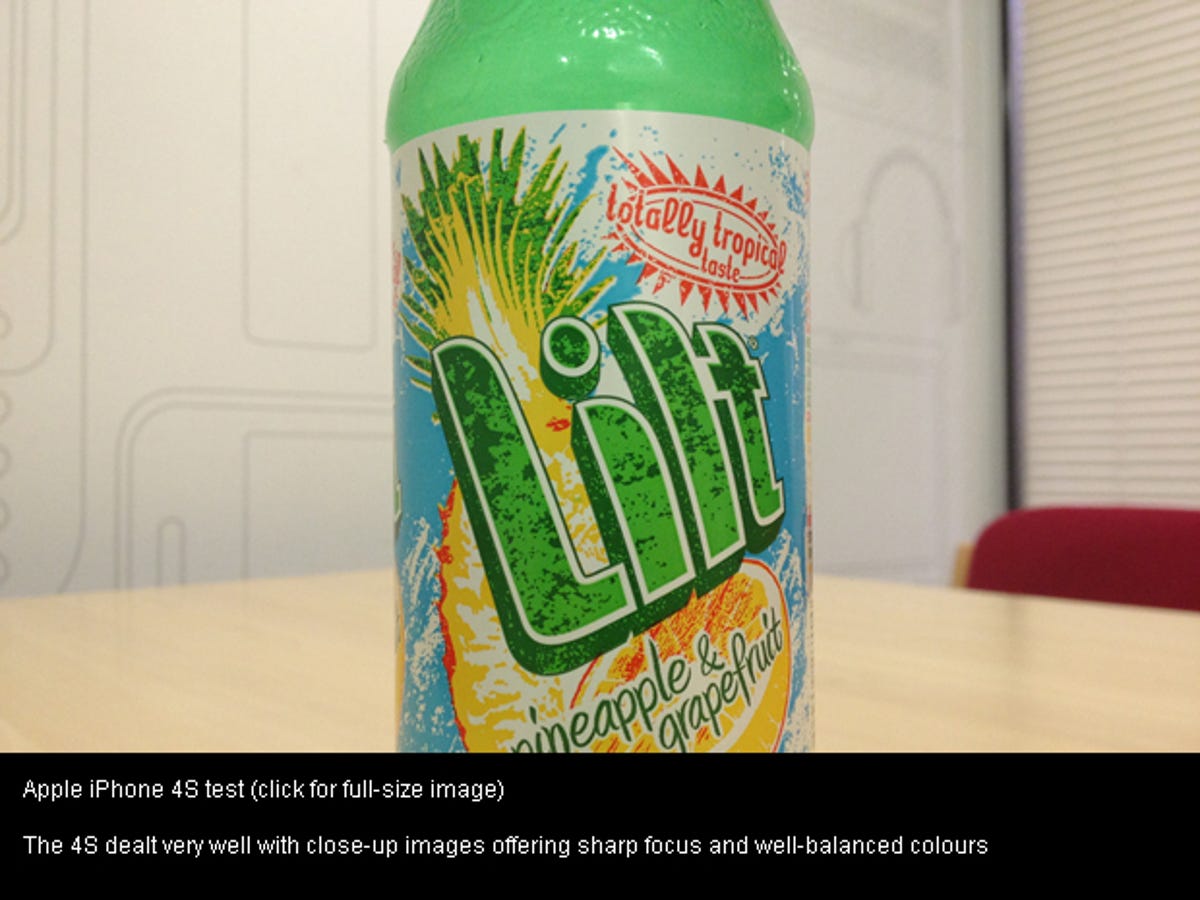

The iPhone 4S was also able to focus extremely well on close-up objects, allowing us to take this sharp photo. At a push, we’d say the iPhone had the slightly sharper picture than the S2, but there’s very little difference.
Close-up photos with flash
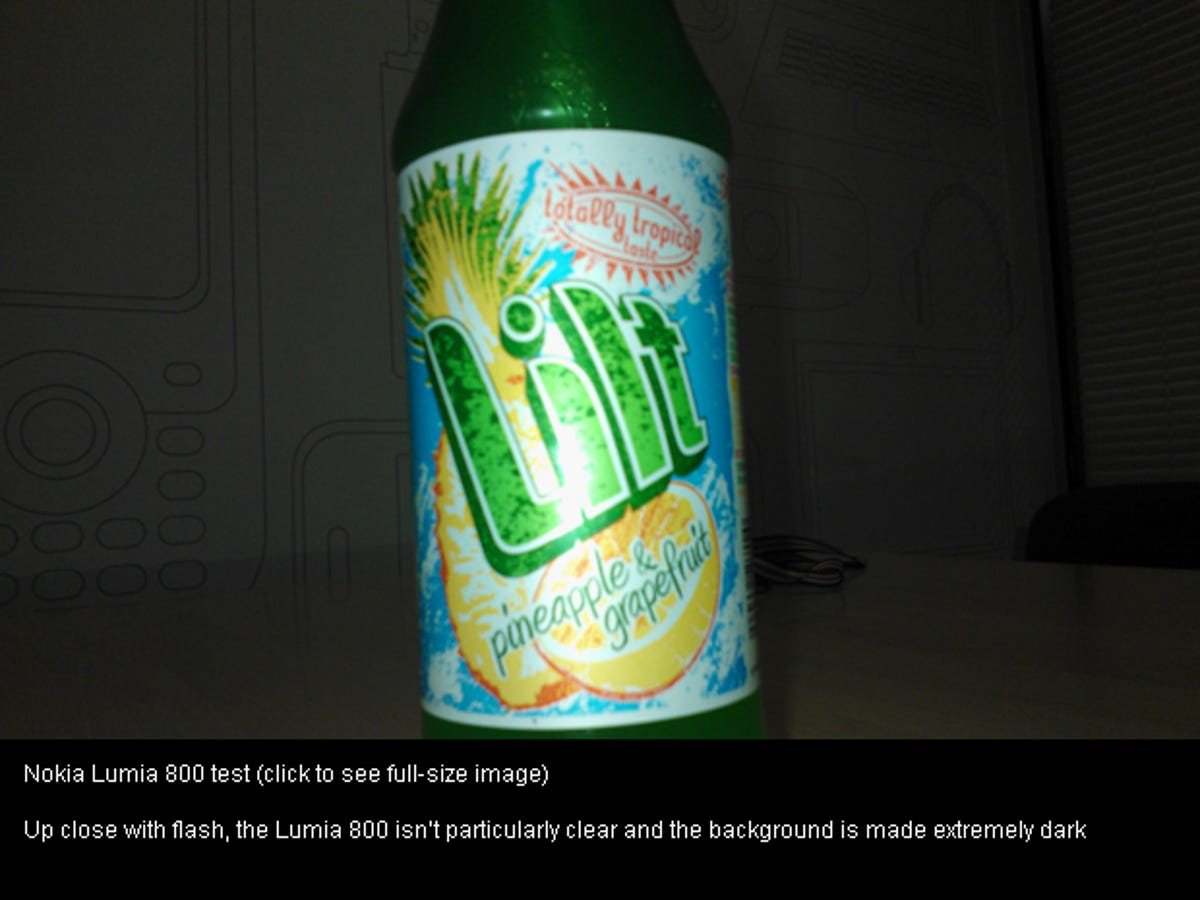

Things aren’t looking too good for the Lumia 800 here either; the camera is still unable to reach sharp focus and the background is made incredibly dark.
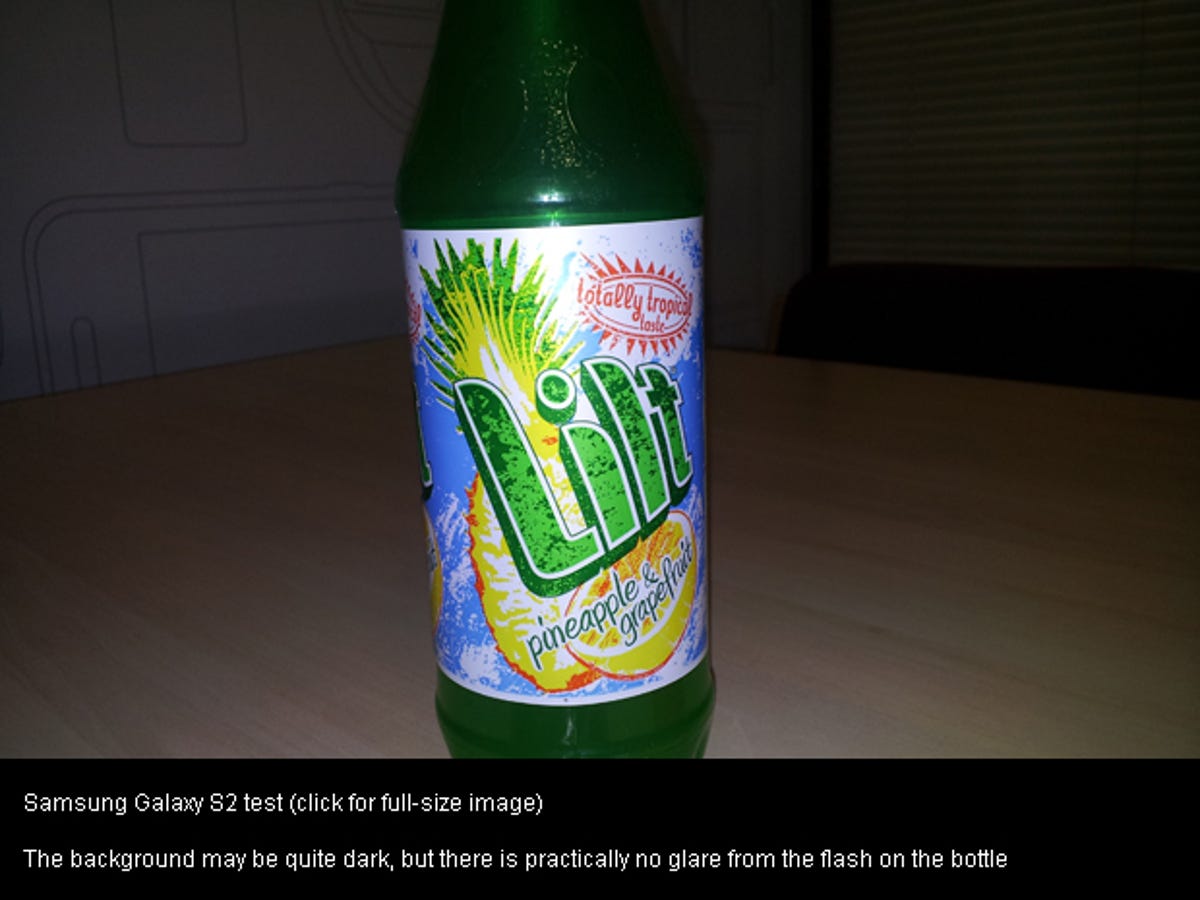

The Galaxy S2 does a fantastic job with the flash on, with detail and colours being dealt with well. There’s also barely any glare on the bottle from the flash — this camera would be great for shots of your mates in a dingy pub.
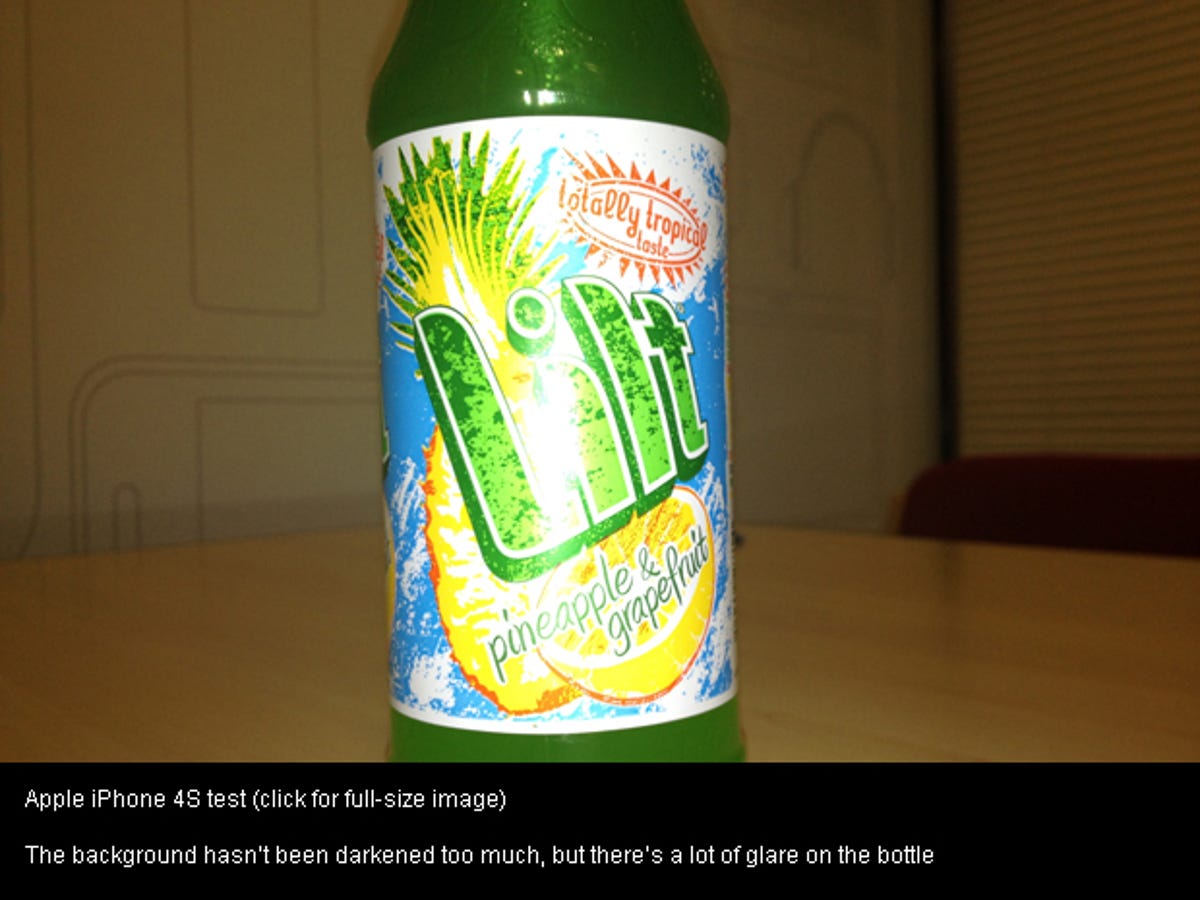

The 4S offered the warmer, more natural colour balance of the bunch, and the background wasn’t lost in darkness. Sadly though, there is a lot of glare on the bottle.
Outdoor photos
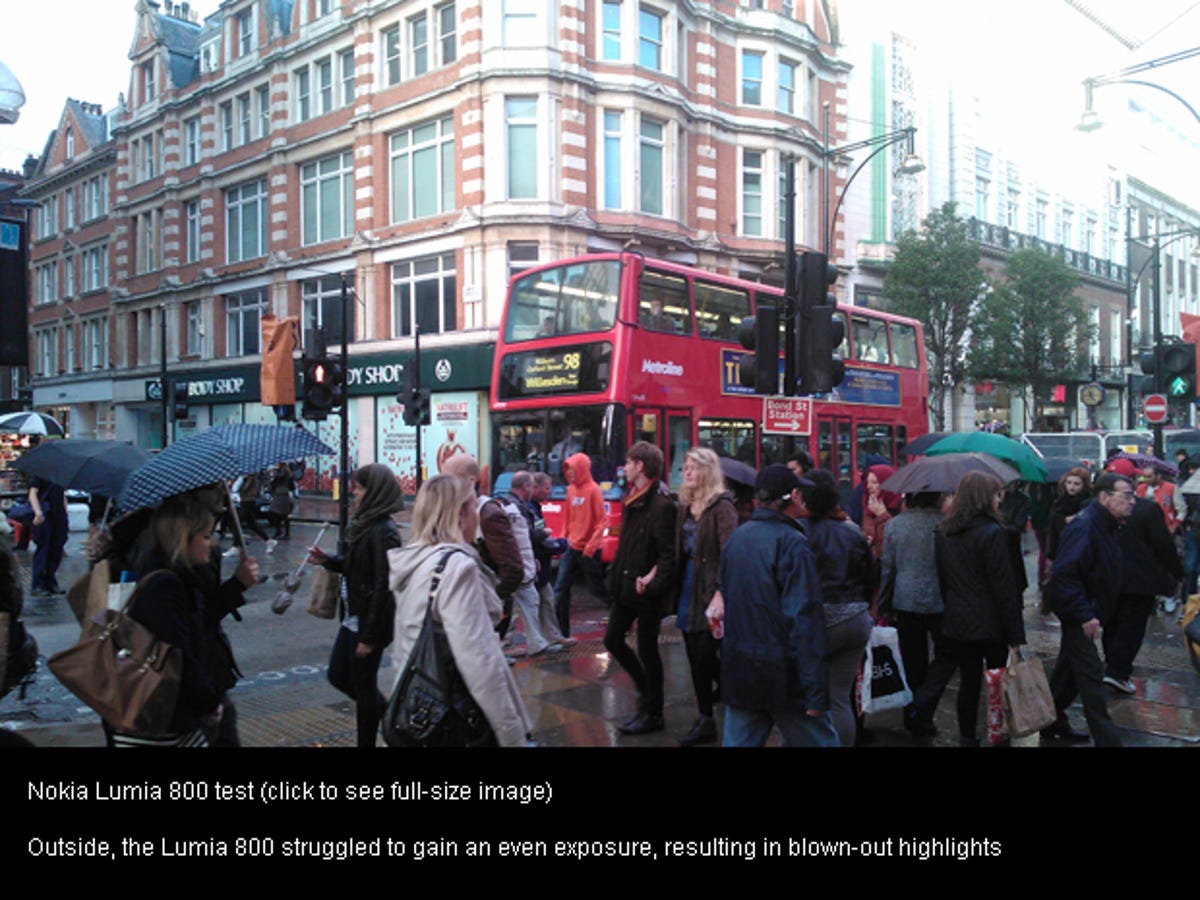

Outside, the Lumia 800 does a fairly good job of displaying colour — it was, after all, a grey and miserable day in London. It doesn’t handle exposure quite so well, as indicated by the blown-out highlights in the sky and in the building on the right.
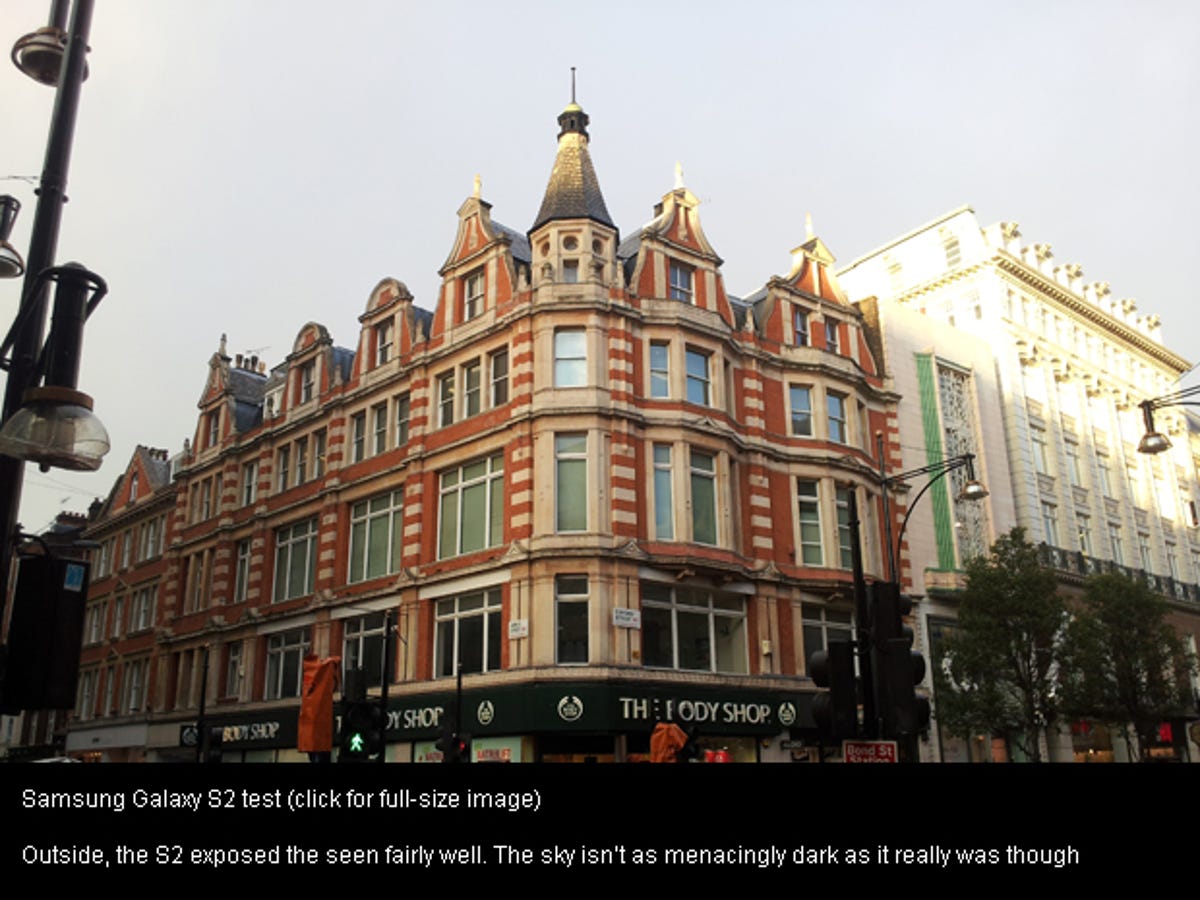

The Galaxy S2 does a better job of things, offering richer colour and a better exposure balance. It’s still not quite got those highlights under control, and we certainly remember the sky being more menacingly dark.
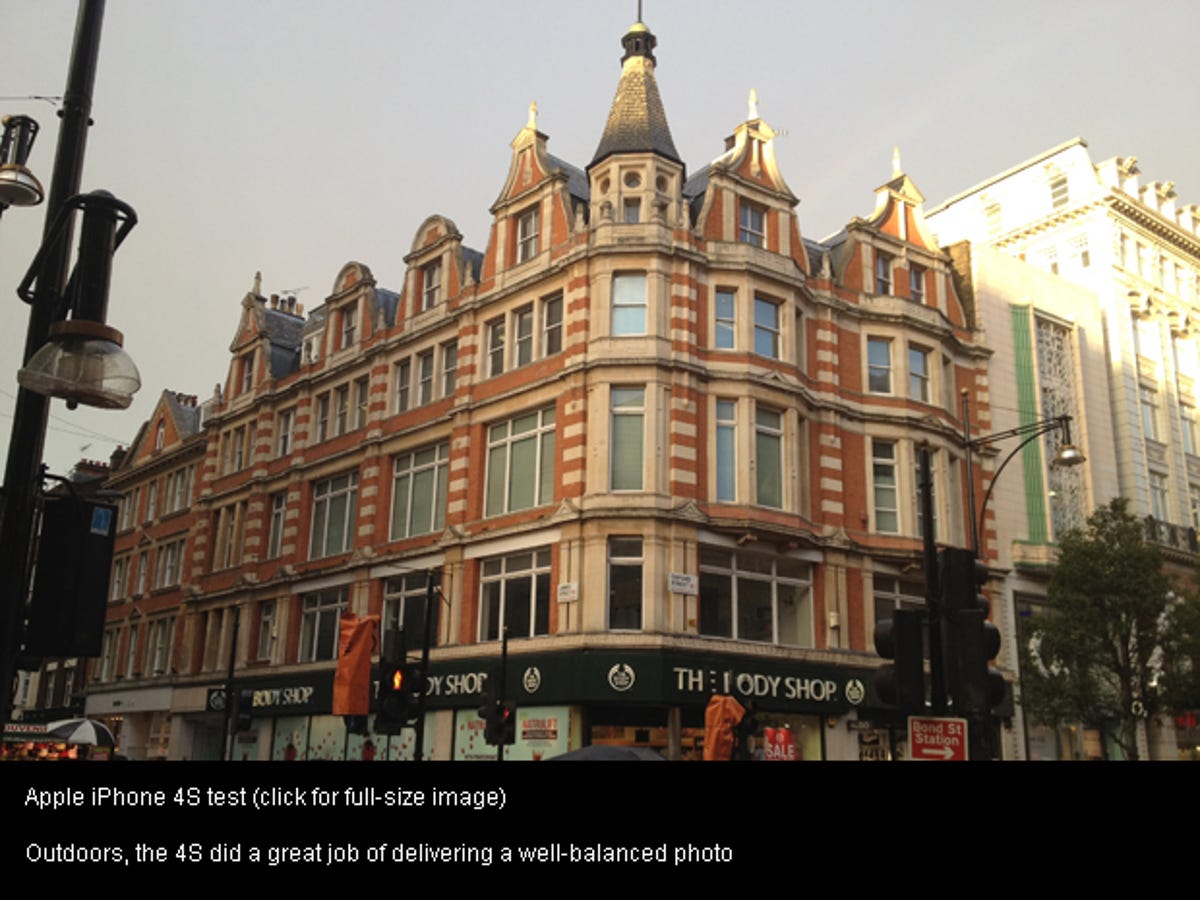

The iPhone 4S provides a much more even tone with better overall exposure. The sky has been captured in a more realistic inky black and hasn’t lost too much detail in the highlights on the right.
Conclusion
In these initial tests, the Nokia Lumia 800 didn’t offer the quality of camera we were hoping for. Its auto white balance settings erred more towards the cold spectrum and it didn’t deal well with close-up subjects.
The Samsung Galaxy S2 and iPhone 4S both managed to capture rich detail and bold colours. The iPhone seemed to have the edge for outdoor scenes with varying brightness, but we’d have to give the prize for flash skills to the Galaxy S2.
Given Nokia’s previous skill at incorporating cameras into phones, we’re rather disappointed with what we’ve seen. We don’t claim this is an extensive test by any means, however, and we’re hoping to see better results using manual settings when we get hold of one for a full review.



